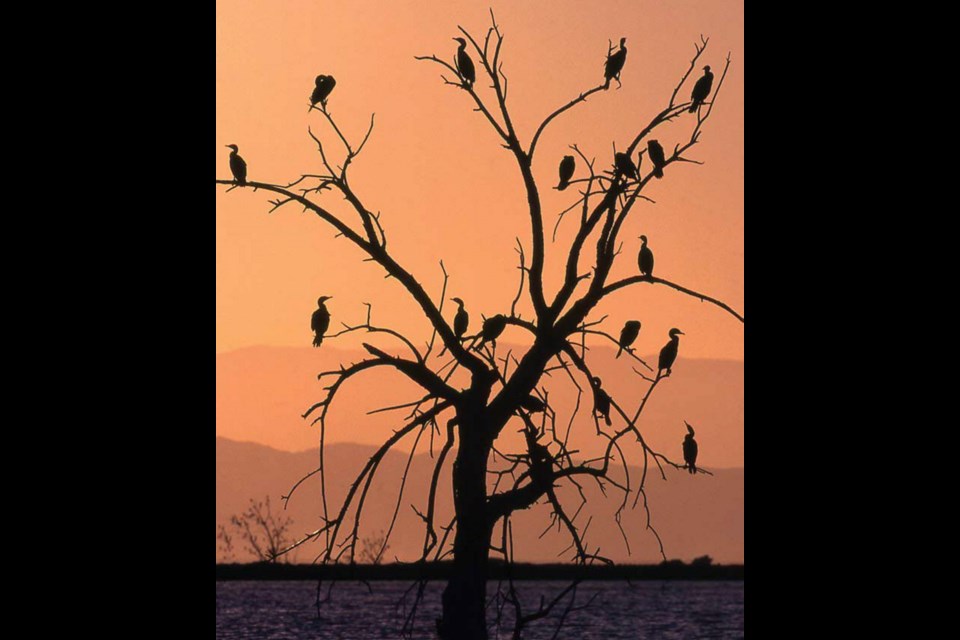The sa���ʴ�ý coast with its rocky, often isolated islands is the nesting ground for 15 species of seabirds, and for three, it’s the world’s single most important breeding habitat.
According to authors of a newly published book, Seabird Colonies of British Columbia, the province plays host to the majority of the world populations of Cassin’s auklets (80 per cent), ancient murrelets (74 per cent) and rhinoceros auklets (56 per cent).
“World populations, that’s pretty serious,” said author R. Wayne Campbell, a former curator of birds at the Royal sa���ʴ�ý Museum, from his home in Saanich. “That’s a tremendous responsibility we have.”
Campbell, Michael Rodway of Gold Bridge near Lillooet, and Moira Lemon of Ladner are the authors of the book, published by the non-profit Biodiversity Centre for Wildlife Studies.
Naturalists can regard the book as a catalogue of the 16 species, 5.6 million individuals and their 542 nesting sites. The black oystercatcher, technically a shorebird, not a seabird, was included because it nests on many of the same islands as the seabirds.
The book also contains 45 pages of references, scientific literature and papers cited. Serious scientists and naturalists can refer to those citations for further information.
But the new book also contains stories of various birds and personal anecdotes from wildlife biologists. Also included are more than 300 images, including maps, illustrations, artwork and lots of photos.
Many of the photographs are of birds. Some help illustrate a little detail. For example, two human kids holding their noses against the funk of a guano-spattered seabird colony show the always-present odour danger.
“The whole approach was a bit of a gamble, but I think it’s paid off,” said Campbell. “I think it’s more readable now.”
“If people are really interested, they can use the tables and go to the back and look at the references,” he said. “But most people will just read it.”
The book’s subtitle is A Century of Change and brings historical perspectives to the species, their numbers and their viability.
Three other Seabird volumes are planned, with the next scheduled to be released later this year. The next three books will take a more geographic perspective, beginning with a look at Haida Gwaii, followed by the outer coast, including the west coast of Vancouver Island, and concluding with the Salish Sea and the Strait of Georgia.
In interviews, all three authors said they hope to interest people in seabirds because they are so vulnerable to things such as oil spills at sea or disturbances at the nest sites.
Many seabirds spend the majority of their lives on the water, and come ashore only at breeding times, often staging together on the water before making their way to nest sites.
So that means, with creatures such as the Cassin’s auklet or the ancient murrelet, a huge chunk of the world’s population is in one place at one foreseeable time.
“So you get a majority of the world’s population of some of these things contained in a very small area,” said Lemon.
“You need to ensure protection of them because it’s pretty important, worldwide.”
For example, the Scott Islands, small rocky islands about 10 kilometres northwest of the northern tip of Vancouver Island, are nesting habitat for 1.1 million seabirds every year. That includes most of the world’s nesting Cassin’s auklets, according to Environment sa���ʴ�ý.
Another example, albeit more alarming, is the ancient murrelet. It breeds mostly on small islands of Haida Gwaii. But invasive species such as raccoons, introduced for their fur decades ago, or invasive rats are a persistent source of predation of eggs, nestlings and adults.
“We have stewardship responsibilities for these birds,” Rodway said.
“What we do with their colonies sets the fate of a lot of the world’s populations.”
Campbell retired in 2000 from the Royal sa���ʴ�ý Museum, where he was a curator of vertebrates. He was also lead author of the definitive, four-volume Birds of British Columbia.
Rodway met Campbell in 1975 while the two were taking courses at the University of Victoria. A passion for seabirds was ignited and has continued ever since.
Lemon grew up in West Point Grey in Vancouver, studied zoology at the University of sa���ʴ�ý, graduating in 1975. Hired as a wildlife technician by the Canadian Wildlife Service, she spent 34 years tracking and monitoring seabirds and their breeding colonies.
The Biodiversity Centre for Wildlife Studies was established in 2004. Twice a year, it publishes Wildlife Afield, a peer-reviewed journal of natural history.
The Biodiversity Centre’s primary aim is to preserve and make available the historical field notes of sa���ʴ�ý wildlife scientists and naturalists. It’s hoped that preserving the field notes can help modern researchers identify long-term trends with the province’s wildlife.
• Seabird Colonies of British Columbia sells for $40 and is available online from the Biodiversity Centre for Wildlife Studies at .



